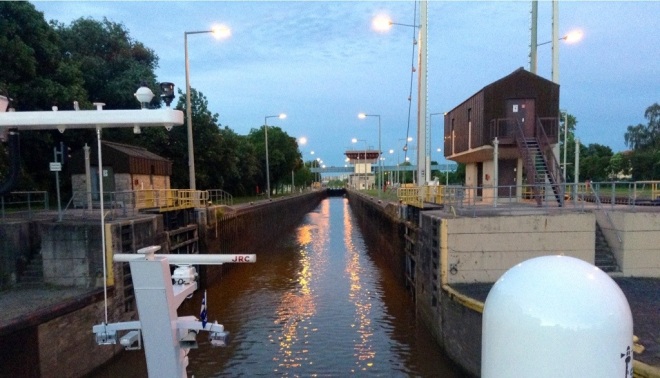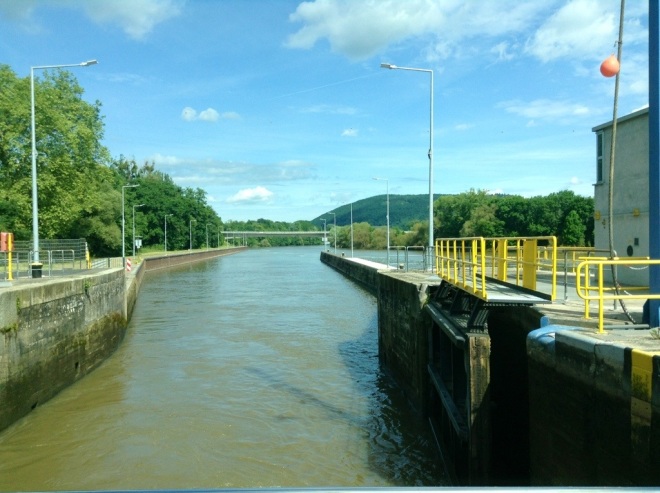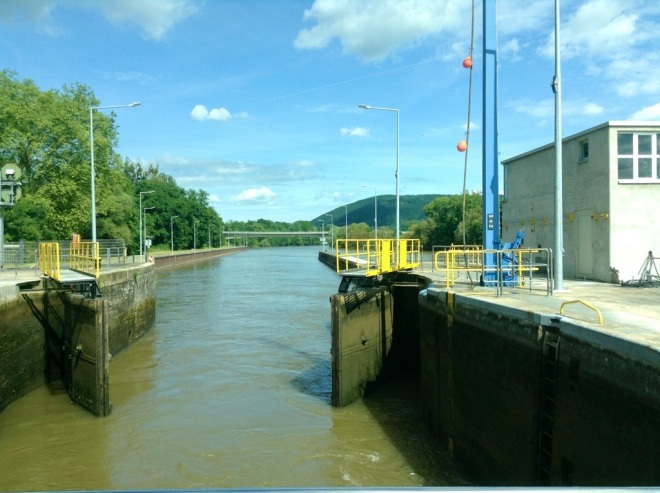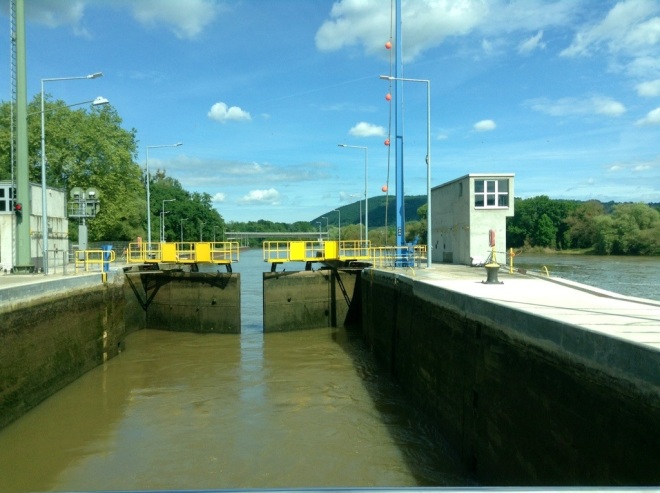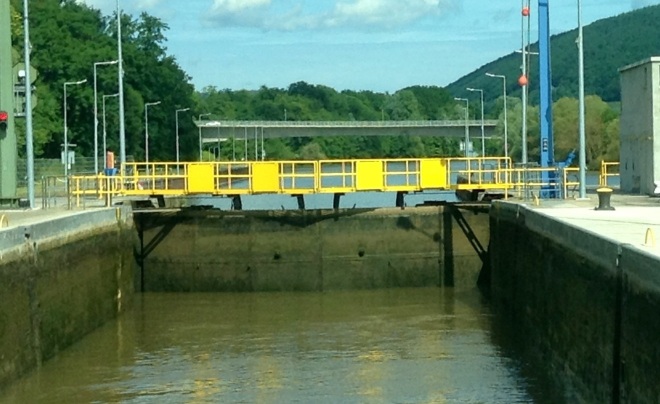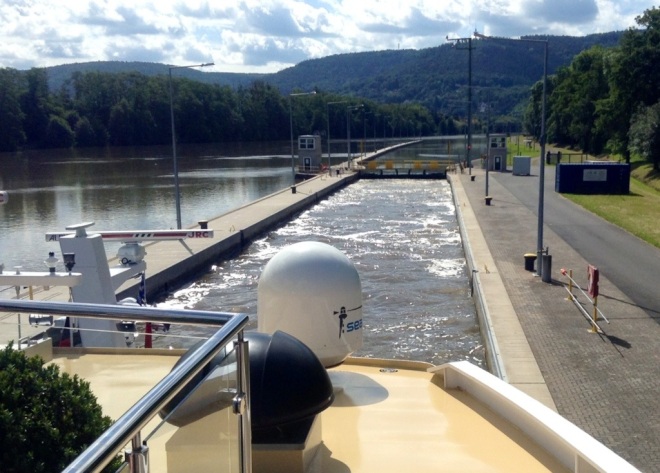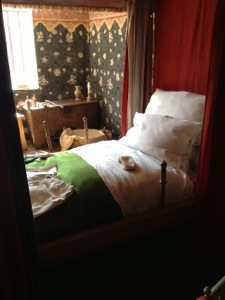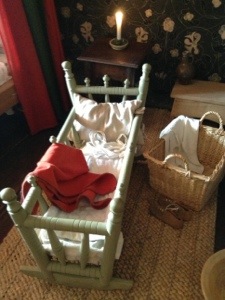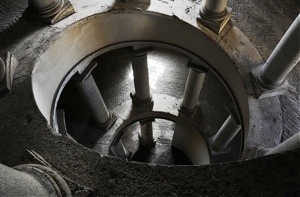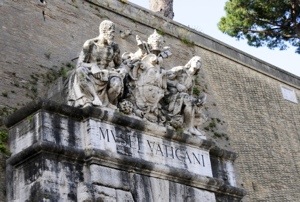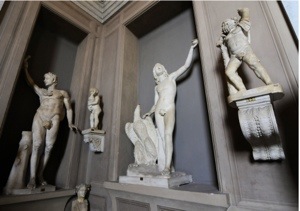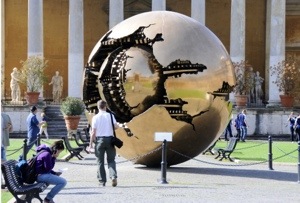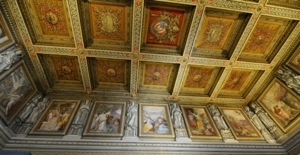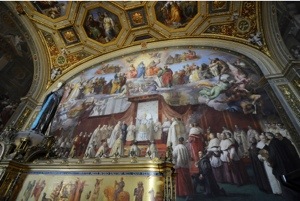Someone asked on my post about Amsterdam’s bicycles whether I would comment on the River Locks to Budapest. What a good idea!
In Roman times the rivers of Europe were unsuitable for transport, too shallow with strong currents and dangerous rocks. The Romans built good roads on the banks to allow quick movement of troops and commerce and used the rivers as boundaries between their Empire and the Germanic barbarians.
Four things changed this: Explosives to clear the rocky shoals, powered ships to overcome the currents and the development of Locks and Canals to join the European rivers into a complex continent wide network of river roads. The last only occurred within the past 20 years.
While the luxurious River Cruisers like we have travelled from Amsterdam to Nuremberg get a lot of attention, and bring in the Euros, it is the commercial traffic that dominate the rivers and Locks. Barges 135 metres by 11.5 loaded down with building materials, food, petroleum products, coal, rubbish what ever go streaming past endlessly. In Australia these are often transported by road.
This movement pattern is controlled by Locks – think of elevators for those giants vessels, that allow us to navigate gradually from sea level to 406 metres and back again. They also are a flood migration aid.
On the Rhine and the Amsterdam Rhine Canal, with its greater commercial traffic these locks were paired allowing one for each direction, double width and double length, allowing 4 maximum sized vessels to move in each direction. On the Main River and it’s Canal, the locks are one way, single width and shorter meaning that a vessels often has to wait for Lock space before moving on.
There are doors at both end of the Lock which close, water either floods in from a holding pond alongside or floods out down the river, depending on whether you are going up or down. This is one case where a picture sequence shows more clearly than words.
The greatest height our boat will be moved is yet to come – 24.7 metres or 81 feet vertical movement will be just after Nuremberg, on our next sailing day. Imagine lifting boats and cargoes the size of these to the height of an 8 story building just with the power of water and gravity, using technology which has hardly changed in a century.
history
Shakespeare’s Birthplace in Stratford on Avon
This is a cheap tour of where Willian Shakespeare was born – his father’s house. Even though he
Inherited this property, he probably did not live here or write in it as an adult. This is a cheap tour because it saves you the airfare and the £15 entry cost. In my English courses in High School we studied a major Shakespearean play every year. Reading his work certainly impacted on me as a reader and a writer.
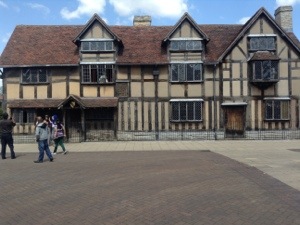
Exterior of William Shakespeare’s birth place in Stratford on Avon
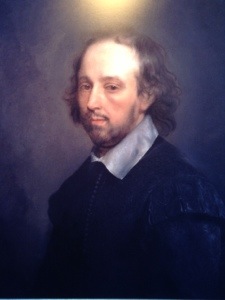
A contemporary portrait of the greatest writer in the English language
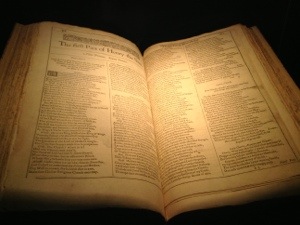
A First Folio of the works of Shakespeare, published by his friends and available for £1 sold about 750 copies. Now the 200 remaining originals are each valued at up too £15 million depending on condition
.
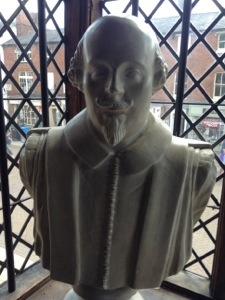
A contemporary bust of Shakespeare

These houses took a lot of heating
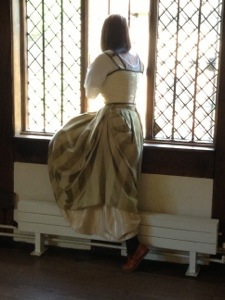
Every room has an actor filling a role from Shakespeare’s time, and doubling as security. The lass pictured here was in the midst of declaiming Juliette’s famous call for Romeo from the windowsill to an audience in the garden below. After a generous bout of applause she went down to deliver “Shakespeare on request”
The Vatican Museum
I think this will be my last post about Rome, but don’t hold me to that as I took nearly a thousand images.
The Vatican Museum is overwhelming. Art has been collected there for nearly 2 millennia, and much of it predates the time of Christ. see my earlier post with the Etruscan statue. More than 5 million people visit each year. There is just so much to see. We had an advantage being with Trafalgar, not only in bypassing queues, but also being allowed once into the restricted area where the original double spiral staircase has been restored.
Walking the corridors, there are statues and sculpture everywhere. The one outside, the metallic globe, is a modern recent work but mostly the Vatican displays classic pieces.
Within the corridors you walk from one hall to another, the ceilings, magnificently painted in a way the makes them look three dimensions, the walls covered with colossal sized tapestries, and paintings and even the floor. It needs much more time than we had to look but mostly to take it all in.

